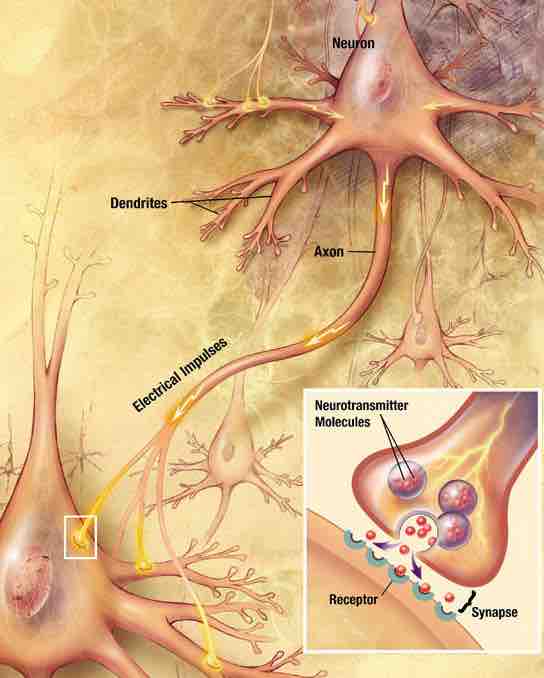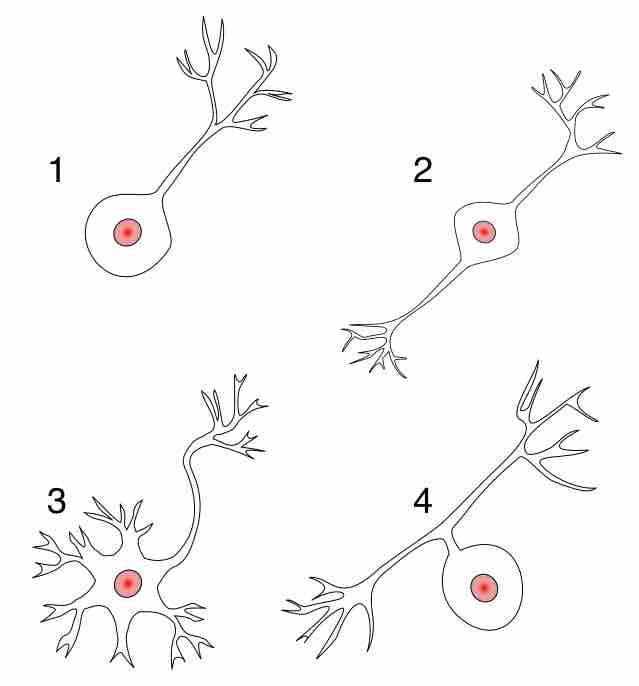Neurons are electrically excitable cells that are the structural unit of the nervous system. A typical neuron consists of a cell body and neuronal processes such as dendrites and axon. The dendrites are short, tapering extensions that are the receptive regions and help in conveying incoming messages towards the cell body. Axons arise from a cone-shaped area of the cell body called axon hillock. These extensions are the conducting region of the neuron. Nerve impulses are generated in the axon and transmitted away from the cell body towards the synapse. The cell body is the major biosynthetic center of the neuron. It contains neurotransmitters and other organelles needed to synthesize proteins and chemicals. The cell body is the focal point for the outgrowth of neuronal process during embryonic development.
A number of anatomically distinct types of neurons have evolved to participate in different organismal functions. For example, sensory neurons respond to touch, sound, light, and other sensory inputs. Motor neurons receive signals from the brain and spinal cord to initiate muscle contractions and affect glands. Interneurons act as relays between neurons in close proximity to one another.

Neurotransmission at a Chemical Synapse
A signal propagating down an axon to the cell body and dendrites of the next cell
Neurons can generally be grouped according to the number of processes extending from their cell bodies. Three major neuron groups make up this classification: multipolar, bipolar, and unipolar. Unipolar neurons have a single short process that emerges from the cell body and divides T-like into proximal and distal branches. Bipolar neurons have two processes, an axon and a dendrite, that extend from opposite ends of the soma. Multipolar neurons, the most common type, have one axon and two or more dendrites.

types of neurons
1: Unipolar neuron, 2: Bipolar neuron, 3: Multipolar neuron, 4: Pseudounipolar neuron